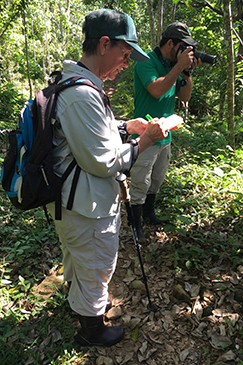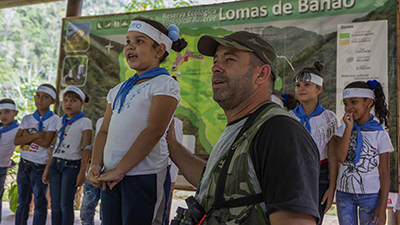プログラム調査日程・空き状況・参加費用等、海外調査に関するお問い合わせは、アースウォッチ・ジャパン事務局にて承ります。info@earthwatch.jp までお気軽にお問い合わせください。
Cuba is on the cusp of a wave of economic development, threatening some of the unique biodiversity living there. Help researchers and wildlife managers to gain a better understanding of wildlife within protected areas in Cuba to better conserve these species.

The mountainous forests of Lomas de Banao Ecological Reserve are home to species only found in the Caribbean—including the vulnerable Cuban Parakeet and the near threatened Cuban Amazon Parrot. Despite this unique biodiversity, long-term political complexities with the U.S. and other nations stymied collaborative international research. But now international relations are improving, making this a critical moment for the island nation’s wildlife. As Cuba becomes more open to the world, many predict new economic opportunities and the development that comes along with it.
Researchers are now able to recruit citizen scientists to help them take stock of the wildlife that inhabit these beautiful protected lands, information that will be crucial to informing management and conservation plans as the island becomes increasingly developed. Volunteers will work with a team of scientists from Cuba and Argentina to document the many endemic and migratory bird species that inhabit the reserves through sightings and audio recordings, survey the flowers and trees, and monitor amphibian species for the presence of the chytrid fungus (which leads to an infectious disease that has decimated amphibian populations worldwide). The data collected will help to paint a more complete picture of these protected areas and how increased development could impact biodiversity in the future.
By studying birds, trees, and amphibians—species that are indicators of habitat quality—scientists hope to gain a better understanding of the overall ecosystem during a pivotal moment for Cuba.
HOW YOU WILL HELP
When you arrive, the researchers will provide you with training and information on studying and assessing biodiversity within the reserve. Field work will begin on Day 3, where you will:
.

MONITOR BIRDS AND AMPHIBIANS
Explore the Banao River Basin as you work alongside researchers to observe and record bird and amphibian species while collecting samples of vocalizations.

SURVEY FOREST TREES
Walk through the forests of Banao as you identify and document tree species, measure canopy coverage, and look for indications of human impact.

COMMUNITY ENGAGEMENT
Interact with local community members to understand the importance of conservation research, including monitoring waterbird species and amphibians to determine climate and water quality, and the value of protecting nearby forests and rivers.
